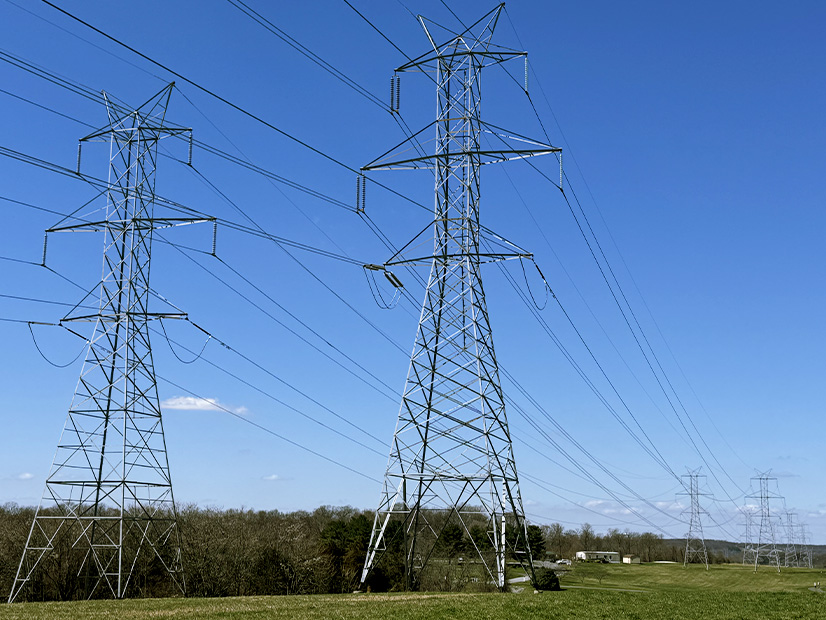A new Advanced Energy United/Grid Strategies report estimates that better PJM interconnection processes could save consumers billions of dollars.
The authors say the system’s inefficiencies raised the cost for consumers as much as $7 billion just in PJM’s latest capacity auction.
They say the problem will persist for PJM without reforms, but add that the situation is not unique to PJM: Regional operators nationwide should see the auction as a warning sign and should expect similar repercussions if they do not address projected generation and transmission needs.
The Pacific Northwest, SPP, MISO, ERCOT and Georgia Power are seeing notable demand growth, the report states, along with PJM.
“Penny wise and pound foolish: PJM’s Capacity Auction Demonstrates the Cost Imperative of Simplified and Speedy Interconnection” was prepared by consulting firm Grid Strategies for the clean power trade organization Advanced Energy United.
Co-author Rob Gramlich said the title derives from the process by which PJM (and other RTOs) allow interconnection of new generation assets.
“Typical interconnection processes are ‘penny wise’ but ‘pound foolish,’” he said in AEU’s announcement of the report. “As illustrated by the data from PJM, grid operators are slow and methodical, which means they provide detailed cost responsibility accounting, but the associated length of time to connect new generation contributes to scarcity and raises consumers’ rates.”
PJM disagreed with the conclusions in the report. A spokesperson said via email:
“The report cites a number of factors that its authors have been actively engaged in influencing. Advanced Energy United, for example consistently advocated against requiring renewable resources to take part in the capacity auction, and they continued to oppose PJM’s successful petition to end that exemption, which FERC recently approved. We look forward to the full participation of these resources in the next auction and the downward impact on prices that comes with additional reliable capacity. The report also returns to the flawed narrative that PJM is to blame for the slow pace of adding new generation, when approximately 50,000 MW in mostly renewable projects have cleared PJM’s process but are not coming online with the pace needed to replace retiring resources and to meet growing demand.”
The report states that despite FERC’s push for proactive transmission planning, most regions still have reactive transmission planning and interconnection processes in place.
As a result, generation is added slowly and capacity market prices rise.
The report highlights the glaring example: PJM’s latest capacity auction, in which the clearing price rose 833% from the 2024/25 Base Residual Auction (BRA). (See PJM Capacity Prices Spike 10-fold in 2025/26 Auction.)
The total cost to consumers was $12.5 billion higher than in the previous BRA, but it could have been as little as $5.5 billion higher, the authors state, had PJM begun proactive transmission planning and simplified its interconnection process years ago.
Updated resource accreditation numbers and new market rules around extreme weather effects factor into the equation, but the report focuses heavily on the basic laws of supply and demand: Load is growing, existing generation is retiring and new generation is coming online too slowly.
Supply offered in the 2025/2026 BRA was about 6.6 GW lower than in 2024/25, while estimated peak load demand was about 3 GW higher.
The report notes that PJM interconnection service requests totaled well over 200 GW at the end of 2023 and estimates that 68.6 GW of accredited capacity is in the PJM interconnection queue.
But very little of that has been coming online. Only about 3 GW was placed in service in 2022, less than 5 GW in 2023 and less than 2 GW in the first 8.5 months of 2024.
The report is backward-looking and analyzes how past cost increases might have been minimized had reforms been enacted earlier. But looking forward, the authors suggest PJM’s partly complete, multiyear interconnection reform process may not prove significantly more efficient when it finally is finished.
Broader strokes are needed nationwide, they write: “While much of the discussion around the exorbitant price tag has treated [the 2025/26 BRA] as a one-off issue that can be fixed by tweaks to market rules, the issue is more fundamental. … Regions across the country should expect to face similar repercussions if they do not address the generation and grid infrastructure needs posed by increased power demand.”
PJM said via email that it is working toward continued improvement: “PJM continues to pursue additional streamlining of the interconnection process, in addition to its recent proposals to speed the entry of new generation resources and to expand the participation of existing resources.”
Independent Market Monitor
Independent Market Monitor Joseph Bowring said he does not agree with the report’s central thesis: that queue issues are a primary cause of higher prices in the PJM capacity market.
He does agree that faster and more efficient interconnection processes are needed, and he told RTO Insider that PJM should have begun pursuing them earlier.
But he disagreed with some other points and conclusions in the report:
-
- Historical data on PJM’s inefficient interconnection process is not a good guide to how the new and improved rules will work.
-
- The problems with PJM’s interconnection queue are due partly to developers crowding it with weak and/or duplicate projects unlikely ever to reach construction.
-
- Most of the proposed resources in PJM’s queue are intermittent, and while they would provide critically needed power, they cannot solve reliability issues.
-
- The report overstates the impact of supply-and-demand fundamentals in the last auction.
Bowring also noted the most recent regulatory changes may change the picture painted by the report.
For example, FERC on Feb. 11 approved PJM’s Reliability Resource Initiative, which will allow PJM to move resources ahead in the queue if they are close to commercial operation. This should help, he said, and PJM should strengthen this approach.
FERC also just approved PJM’s surplus interconnection service proposal to permit the more efficient use of existing transmission capacity, Bowring noted. (See FERC Approves PJM’s One-time Fast-track Interconnection Process.)



